Matador Network's Blog, page 854
May 20, 2020
17-year cicadas emerging

After 17 years spent underground, Brood IX (9) periodical cicadas are getting ready to burst from the ground in the coming days and weeks. The emergence is expected to happen mostly in northwestern North Carolina, southwestern Virginia, and southeastern West Virginia. The insects usually appear in mid-May and continue through early July, emerging from the ground when the soil temperature reaches 64 degrees.
While underground, the cicadas are digging tunnels and feasting on tree roots. The unique 17-year life cycle has developed as an evolutionary technique for avoiding predators, making it difficult for other species to sync the cicada life cycle with their own. Once they emerge, the male will start buzzing loudly to attract mates.
Although this brood has spent 17 years underground, some periodical cicadas only stay 13 years in their subterranean dwellings.
Adult cicadas have a lifespan of just one month, but since females leave behind hundreds of eggs, their population numbers remain high.
Periodical cicadas are large, with orange-veined wings and big red eyes. Despite their striking appearance, you may not spot them, but you’re sure to hear them. 
More like this Wildlife 11 bugs with powerful stings and hellish diseases to look out for
The post 17-year cicadas all set to buzz around North Carolina, Virginia, and West Virginia appeared first on Matador Network.

'Kitchen Confidential' anniversary

I was 26 when I discovered Anthony Bourdain. I’d never heard of him until I pulled a battered, well-worn copy of Kitchen Confidential off of my partner’s book shelf. On the cover, a young Bourdain, who openly admitted that he wasn’t a very good chef, has two swords tucked into his white kitchen apron, one arm draped protectively across his body. Like many who pick up that book, I was intrigued and a little bit in awe of the man who looked audacious yet oddly shy.
I had just been hired at a magazine focused on restaurants and chefs — my first foray into food writing — and, as it turned out, it would become not just necessary but absolutely pertinent to know everything about Bourdain. The more I learned about him, the more enamored with him I became. I think that was true for anyone who devotedly followed his career. We all simply fell in love with Tony. That’s why reading Kitchen Confidential is such a let down today. He should have known better.
At first, I was shocked but secretly delighted by what he revealed in the pages of Kitchen Confidential, which was published on May 22, 2000 — an astonishing 20 years ago. Particularly memorable are the stories about chefs having sex with customers in the walk-ins; the revelation that he had a dangerous cocaine habit when he worked at Les Halles that carried over to the kitchen; and his strict instructions on what to eat and what to avoid in a restaurant, which I parroted to everyone I dined out with for the next three to five years (“Tony says skip the shrimp, only order the fish on Tuesday and Thursday”).
He was provocative on purpose, poking the reader with a stick with each taboo topic. This all seemed very romantic to me, learning about the bad boys of the restaurant world. Ah, how naive I was then.
I simply accepted that chefs were aggressive, raunchy, and loud, yet had an undeniable swagger that I supposed came from surviving brutal, long hours stuffed together in a tiny, hot kitchen while being constantly burned, berated, and otherwise abused. This is the environment that shaped Anthony Bourdain, the coolest guy in the world. I figured there must be something redeeming about it. I was wrong.
In 2017, I was sitting at my desk at the same food magazine when the news broke that Mario Batali had been credibly accused of sexual harassment. The news triggered an avalanche of accustations ranging from mistreatment to assault to rape in the restaurant industry. Exposing the abusive practices rampant in restaurant kitchens became a linchpin in the #MeToo movement. I realized pretty soon after, as I think Bourdain did too, that it was time to rethink Kitchen Confidential.
In the 1999 New Yorker essay that launched him to fame and a book deal for Kitchen Confidential, Bourdain wrote that “ancient rituals derive from the principles of stoicism in the face of humiliation, injury, fatigue.” That line might be at the heart of the problem with Bourdain’s then-attitude about restaurant work. It takes the abuse endemic to the restaurant industry at face value. Restaurants had to be that way, according to the Anthony Bourdain of 1999 and 2000, when the book was published. But he had it wrong.
Enduring cruelty shouldn’t have to be the tradeoff for wanting to cook food professionally. Bourdain romanticized the type of man who routinely made kitchen unsafe spaces with raunchy jokes, sexually explicit language, and unchecked aggression.
In the book, he writes, “Assume the worst. About everybody … Just because someone you work with is a miserable, treacherous, self-serving, capricious and corrupt asshole shouldn’t prevent you from enjoying their company, working with them or finding them entertaining.” That is the very type of cook who might have been accused of assault in 2017, or who is still getting away with it today, and no one should be forced to “enjoy their company” for fear of losing their job or being assaulted. People who live under that type of reign of terror don’t have the privilege of finding such abhorrent behavior entertaining.
“It has been dismissed many times by women in this industry, and rightly so, as the bro bible,” Bourdain told the 2017 graduating class at Culinary Institute of America. “If there’s a harasser in the kitchen who’s a jerk at work, chances are he’s got my book at his station, and I am going to have to live with that.”
He didn’t exactly denounce Kitchen Confidential, but from that moment forward, it became a relic. Today, the book reflects why the industry is in desperate need of more women and people of color in charge — more people who can cultivate a culture of decency, support, and accountability. Bourdain missed an opportunity to be a little more critical of a world that glamorized the abuse, coercion, and fear that made restaurants some of the worst working conditions in America.
Luckily, once Bourdain left the kitchen, he became one of the most compassionate, curious people on the planet who spent the rest of his life using food as a way to build understanding and empathy between cultures. He was also an outspoken supporter of the women fueling the #MeToo movement, in particular his partner at the time, Asia Argento, a prominent survivor of assault by Harvery Weinstein. Bourdain repeatedly voiced his support for Argento on Twitter, writing that he was “honored” to know her and praising her bravery for coming forward. He stopped talking and started listening, basically.
But it’s possible the trauma and addictions of his restaurant days stayed with him forever. The day he died, I drank too much beer after work and watched the Houston episode of Parts Unknown, silent tears running down my face.
“It’s great because your grandfather and my grandfather … crammed themselves, snuck, bought their way, or was dragged onto a boat and one way or another allowed themselves eventually to dream. You can. There’s still room. And in some places in America, apparently, you’re still welcome. Welcome, stranger. This land is your land,” Bourdain narrates at the end of that episode.
That is the legacy of Bourdain today, not the inflammatory, outrageous-on-purpose Kitchen Confidential. It’s still an entertaining, lively book, but it’s not Bourdain at his best. Bourdain at his best found normal people making good food, raising families, and supporting their cities, and gave them the spotlight. That’s how I’ll remember him. He is still one of my heroes, after all — despite how disappointed I ended up being in the book that made me love him in the first place. 
More like this News The travel guide Anthony Bourdain started writing before his death is coming out this year
The post Remembering Anthony Bourdain on the 20th anniversary of ‘Kitchen Confidential’ appeared first on Matador Network.

The most underrated American BBQ
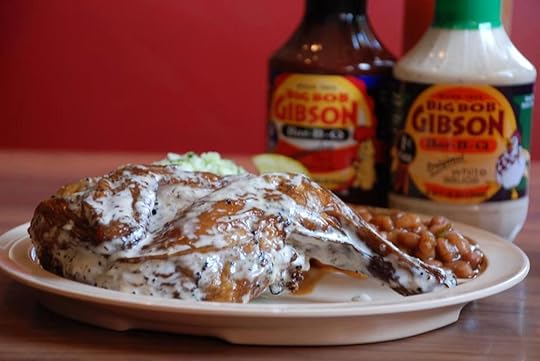
No one style defines American barbecue. Ask anyone where to find the country’s definitive barbecue, though, and they’ll likely point you toward the South.
Four destinations in the southern United States make up what’s known as the barbecue belt: There’s Texas with its brisket, Memphis with its pork ribs, Kansas City with Missouri’s best burnt ends, and the Carolinas with their competing takes on pulled pork and slathery sauce.
Barbecue is a loose concept, however. It typically refers to meat cooked over an open flame, but that definition changes with every age-old barbecue tradition around the world. The concept also changes across the US, both inside and outside of the country’s southeastern quadrant.
If you never visit the barbecue belt, rest assured that you still have a shot at tasting some of the finest, smokiest, sauciest dishes around with these lesser-known American barbecue staples.
1. Chicago barbecue
Chicago knows comfort food: deep dish pizza. Italian beef sandwiches. Hot dogs “dragged through the mud” with toppings like relish, white onions, pickled peppers, and tomatoes, plus a healthy squirt of yellow mustard. And, though not as many out-of-staters realize, barbecue.
Chicago’s barbecue preferences draw a line down the city, separating North and South Side loyalists. North Side barbecue places a heavy emphasis on sausages and boiled spare ribs, influences from early Eastern European immigrant populations. South Side barbecue, which some might say is the must-eat of the two, revolves around rib tips and aquarium smokers.
Rib tips are the fat ends of spare ribs. In the South Side, they’re smothered in tomato-based sauce and eaten between slices of white bread. Even more iconic is the aquarium smoker, a big glass box mounted on steel that looks like a fish tank you might find in a seafood restaurant, except with smoked meat rather than lobsters swimming around.
2. California’s Santa Maria-style

Photo: Sydneymills/Shutterstock
California’s not a state most people associate with barbecue, unless you count the grilled beef patties at In-N-Out Burger. Santa Maria-style earns the West Coast hub a spot on the barbecue map, however, at least where the central stretch between San Luis Obispo and Santa Barbara is concerned. A holdover of California’s Spanish and later Mexican heritage, the grilling practice dates back to the mid-1800s feasts cattle ranchers would make for cowboys, or vaqueros.
The process is simple: Beef, typically tri-tip, is dry-rubbed with salt, pepper, and garlic before being hoisted onto an iron grill, similar to the parrilla used to cook Argentinian asado. Meats like steak, venison, chicken, or chorizo may also be thrown over the coals along with vegetables. The more important rule is that, whatever the protein, it’s grilled over red oak wood. To round out the meal, Santa Maria-style feasters load up on pinquito beans and top their plates off with a spoonful of salsa.
3. Baltimore pit beef
Maryland may be the poster child for crab, but the Chesapeake Bay state also knows its way around a cow. Specifically pit beef, and specifically Baltimore. Pit beef takes round cuts, those from the cow’s rear leg, and slow roasts them over charcoal. It’s then sliced thin and piled high on a Kaiser roll or plain white bread. Pit beef sandwiches may be smothered in barbecue or tiger sauce, a blend of mayonnaise and horseradish, or possibly both. It’s unclear when pit beef became a Baltimore staple, but by the 1980s, no self-respecting Marylander could resist pulling over at a pit beef stall while driving down the Pulaski Highway.
4. Alabama white sauce
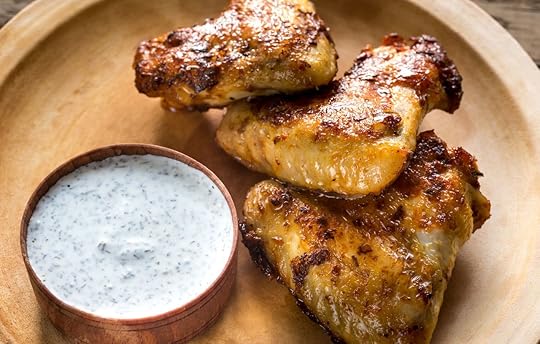
Photo: Alexander Prokopenko/Shutterstock
There’s a lot of talk about sauce in the barbecue belt. Or maybe debate is a better word. South Carolina’s sauce is thick and mustardy. The North Carolina standard changes from east to west, with Lexington-style sauce leaning on ketchup and Eastern-style sauce resting on a simple vinegar-pepper blend. Texas sauce is generally smokier and more heavily spiced, though many central Texans prefer their barbecue sans sauce.
Alabama’s go-to slather hardly looks like barbecue sauce at all. It’s white, thanks to its mayonnaise base, and tangy, owing to a liberal use of vinegar and the occasional addition of horseradish. More often than not, white sauce is smeared over chicken as a marinade, base, or condiment. Sometimes it’s used as all three, just the way inventor Robert Gibson of Big Bob Gibson’s Bar-B-Q in Decatur, Alabama, intended.
5. Kentucky mutton
Just north of Tennessee and east of Missouri, Kentucky sits smack in the greater barbecue belt, even if it’s not one of the big four destinations. Though beef and pork dominate barbecue menus elsewhere, it’s sheep that reigns supreme in Kentucky, specifically mutton. Owensboro in Daviess County is the state’s authority on barbecue mutton, possibly even the world’s. There, local institutions like Moonlight Bar-B-Q serve everything from chopped mutton plates to sliced mutton sandwiches to mutton ribs. To get the characteristic Kentucky taste, pitmasters smoke the meat low and slow over hickory wood.
6. Florida-style barbecue
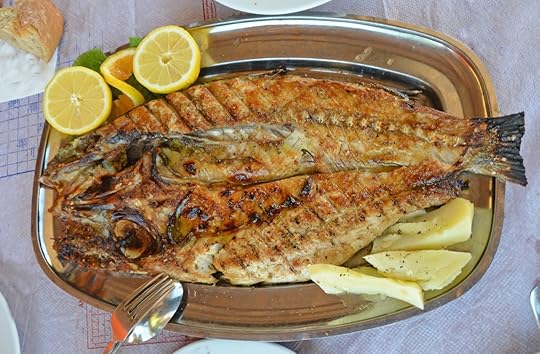
Photo: kostasgr/Shutterstock
Florida may belong to the southern United States geographically, but it’s controversial to count it as the American South. Culturally, Florida is a state unto itself, and culinarily, a city like Miami seems to have more in common with Havana than Memphis. But like most states in that part of the country, Florida has its very own barbecue scene, one with a Latin-Caribbean flare.
Citrus is a predominant flavor in Florida-style barbecue sauces. Orange juice and apple cider vinegar is a popular combination. Tropical fruits like mango and pineapple might add complexity, and hot peppers provide an extra kick. Yet the ingredient most representative of Florida barbecue is mullet, a fish found in tropical waters. Smoked striped mullet, sometimes called Biloxi bacon after the coastal city in Mississippi, is eaten plain with tartar sauce or mixed with cream cheese, mayonnaise or sour cream, hot sauce, lemon or lime juice, garlic and onions, Worcestershire sauce, and a variety of herbs and spices to make a delicious, barbecue-y dip.
7. Oklahoma’s smoked bologna
Barbecue? In Oklahoma? “What a load of baloney,” you might be thinking. And, in a way, you’d be right. Most Southern barbecue classics are easy to come by in Oklahoma. Pulled pork abounds, and Texas-style brisket is a specialty. Local sauces resemble those in Kansas City, which use ketchup as a base, though they’re generally applied with a lighter hand. But when it comes to local Oklahoma barbecue, smoked bologna is the Sooner State’s claim to fame.
Locally, smoked bologna is nicknamed “Oklahoma tenderloin” or “Oklahoma prime rib.” Preparations vary, though thick cuts of of the pork sausage are a popular sandwich filling. Pit bologna is most often piled onto Texas toast or a plain bun with other barbecued meats such as hot links. There’s some debate as to where the craze originated, with both Tulsa and Oklahoma taking credit, but Sooners can all agree that smoked bologna is a statewide staple.
8. Hawaii’s kalua style

Photo: Molly NZ/Shutterstock
Picture a Hawaiin luau, and a whole roasted pig probably comes to mind. Hawaiian barbecue centers on kalua-style cooking, referring to meats that are cooked in an underground oven known as an imu. Kalua pig is the most common: It’s thrown in a pit over a fire, loaded up with lava rocks, covered with banana leaves to seal in flavor, buried, and left to bake all day. Other proteins, such as turkey, may also be cooked this way. During barbecue blowouts, Hawaiians typically fill their plates with other grilled meats, including beef and chicken, as well as sauces and sides that borrow flavors from both the South and East Asia. 
More like this Food + Drink The ultimate beginner’s guide to every style of Texas barbecue
The post Beyond the barbecue belt: 8 of America’s lesser-known barbecue staples appeared first on Matador Network.

PTSD sports treatment for veterans
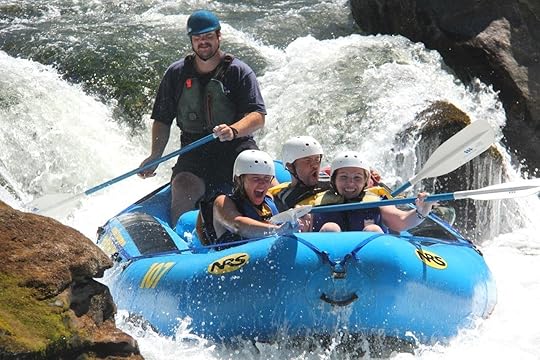
Bill Geiger’s wife had reached her breaking point. After the Army MP returned home from deployments to Guantanamo Bay and Iraq, he had become a different person, removing himself into depression and often screaming at their children. And in the fog of readjustment to life at home, somehow he’d missed that there was a serious problem.
“My wife left an email open on our computer to our pastor saying, ‘If I knew he was going to be like this, I’d never have married him,’” Geiger says. “It was the start of me realizing I had a serious problem on my hands.”
Lisa Crutch wasn’t faring much better. After suffering a massive head injury in a convoy vehicle collision in Iraq, the Army veteran returned home unable to sleep, sitting up nights on high alert for no apparent reason.
“I was up at three, four, five in the morning, looking out the window, watching and waiting,” she says. “I was on high alert all the time, making sure nobody was breaking in and walking around the house making sure my family was okay. I knew something was wrong, but I didn’t want to admit anything was wrong.”
After her husband urged her to go to the VA, she learned she had not only traumatic brain injury but also was suffering from posttraumatic stress disorder, or PTSD. The VA, however, didn’t offer her much more than a couple of pamphlets explaining the conditions before sending her on her way.
Geiger and Crutch are but two of the tens of thousands of veterans who have returned from recent conflicts in Iraq, Afghanistan, and other parts of the world with PTSD. And as society grapples with how to integrate our returning warriors back into society, vets like these two have turned to the adrenaline-fueled world of adventure sports to help them heal. It’s a safe way to channel their need for the adrenaline rush of combat, and it gives them a sense of camaraderie and calm at the same time.
Replacing the high of combat with high-flying sports
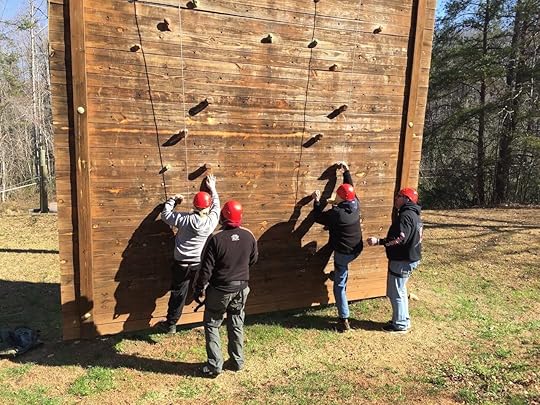
Photo: Wounded Warrior Project
“Guys coming back, they’re used to that adrenaline high, and every time they see or hear something it scares them,” says Mike Holder, owner of Banning Mills Resort in Georgia, where many veterans from nearby Ft. Benning go to burn off that adrenaline. “So they have this command-directed program for guys to come up here … and nothing gets that adrenaline popping like a zip line.”
Banning Mills is also one of many locations to host the Wounded Warrior Project’s Project Odyssey, a 12-week program designed to treat PTSD and other combat-related invisible injuries, beginning with five days of adventure sports. It runs nationwide, inviting participants to do everything from whitewater rafting to rappelling to scuba diving, and serves to jumpstart their brains in a positive manner.
“It gets you outside your own head,” says Geiger, who has been on multiple Project Odysseys and served as a project mentor. “It allows a group of people who are inside their own thoughts all the time, the majority of which are negative, not to dwell on it and get out in the nature God created.”
The sports aren’t just a mental escape, either. On a neurological level, they provide the brain with adrenaline it’s gotten used to and allow veterans to channel that adrenaline in positive ways.
“When you’re used to producing a lot of adrenaline, your body becomes driven by that rush of adrenaline. And when you’re traumatized, you revert back to that part of the brain,” says Dr. Darby Fox, a therapist based near New York City. [Adventure sport] give you the adrenaline produced in a war situation, as a negative situation, but this way it’s therapeutic and you get that same sort of rush but you know you’re going to be okay. You get the same euphoric feeling, with a positive outcome.”
It also feeds into the types of personalities who choose to join the military in the first place, giving them a little jolt of the things they love when their brain is depressed.
“Generally folks who are ex-military or into law enforcement, they like that kinda stuff,” says Mike Raciti, a 24-year Army combat veteran and author of I Just Want to See Trees: A Journey Through P.T.S.D. “They like a little rush. They like the sports that require a certain degree of risk and bravery. That’s why things like zip lining and parachuting are very common in the PTSD community.”
Overcoming fears as a team, as they did in combat
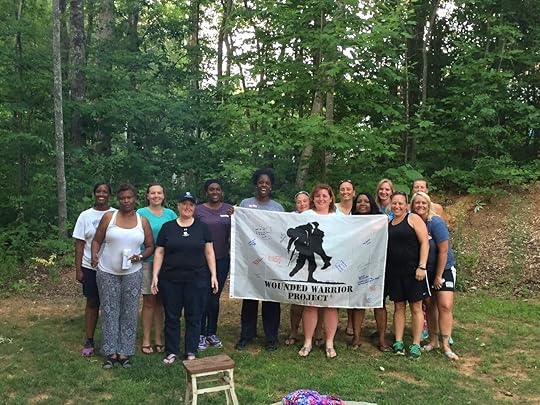
Photo: Wounded Warrior Project
While adrenaline plays a big part in why adventure sports are therapeutic, there’s more at play than simple brain chemistry. They also provide a place for veterans to overcome fears they’ve developed since returning home, using the group support system they were used to on active duty.
Geiger tells of a Project Odyssey trip to Bridge Day at the New River Gorge in West Virginia. His group was set to rappel down the 876-foot bridge, a terrifying thought to a man admittedly deathly afraid of heights.
“There was another guy there who was even more scared of heights than I was, and I didn’t think that was possible,” he says. “In order to rappel, you have to step off the bridge, onto support beams, and have faith to sit back into your harness, and we’d rather do anything than something related to height. But when we were in that group of veterans, we were both able to complete the activity, so to me there’s more than just the adrenaline part. There’s so much more to that activity when you talk about overcoming fears.”
Geiger went on to reminisce on a scuba diving trip to Florida, during which veterans who were terrified of the water overcame that obstacle to explore the undersea world. And the comfort they feel around other veterans allows them to overcome other fears that may hamper their home lives too.
“A lot of guys refuse to take their families out to dinner because they’re afraid of crowded restaurants,” he says, referring to a time when most people did that without a second thought. “But you go in with 10 guys you just met, and you see it’s physically and mentally possible, and they can go home and do something as simple as take their family out to dinner.”
The reason the therapy works is that it allows traumatized vets to feel less isolated and therefore makes them able to relax and function outside of their sometimes-detrimental thoughts.
“Because of what they’d gone through they’re disconnected and isolated,” explains Dr. Fox. “We pick something to engage them into the life they had once to feel less lonely, less disconnected. That’s how we heal the trauma.”
Crutch, who has also attended several Project Odysseys and worked as a project mentor, says healing would just not have been possible around only civilians.
“I’m an adventurous person, but for me, mentally, doing high ropes courses [with other veterans] I’m more comfortable because I’m not so much on high alert,” she says. “When I’m with them, I know they have my back. I’m more comfortable. If it’s just you and civilians, I wouldn’t be put in that situation. Being put there with other warriors, I’m there, I’m all in, I feel very much protected.”
Taking adventure sports lessons home
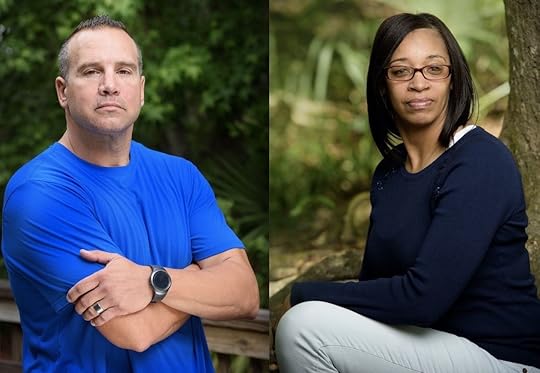
Photo: Bill Geiger (left), Lisa Crutch (right)
The Wounded Warrior Project is far from the only organization using sports to help heal PTSD — the Warrior Surf Project in South Carolina is another fine example — but it does have the benefit of 11 weeks of follow-up programming to make sure its alumni take the progress they’ve made and keep going. And that also has the potential to keep them from becoming dependent on medication.
“An hour or two of exercise a week equated to one medication,” says Raciti, who now works as a physician’s assistant in Phoenix. “If you’re on two antidepressants you could get off of those by exercising regularly.”
Though they can be beneficial for combat veterans, adventure sports may not work for everyone suffering from PTSD. Dr. Fox says that while it’s beneficial for people driven by intensity, more introverted types suffering from symptoms of depression probably wouldn’t see much benefit.
But for veterans like Geiger and Crutch, getting outside, with their blood pumping, doing ropes courses and rafting has helped them feel more at home. And it’s led them to realize the life they had on the battlefield isn’t one they can bring back to their families.
During a Project Odyssey outing in the Florida Keys, Geiger, who is still married, had this revelation. His group was tasked with training dolphins to do various tasks, and the yelling and screaming that is commonplace in combat wasn’t going to work on a cuddly marine mammal.
“I spent a week being calm, cool, and collected getting a dolphin to jump through a hoop, and I realized why can’t I just use the same approach with my kids?” he says. “That environment of yelling and hollering, it doesn’t get you much of anywhere. And it made me realize you can’t make a dolphin jump through a hoop by yelling.” 
More like this Extreme Sports Archery is the sport of the moment, and here’s how to get started
The post Veterans are using adventure sports to treat PTSD, and it’s working appeared first on Matador Network.

Nara deer under the cherry blossoms

Seeing Japan’s Nara Park full of deer isn’t exactly an anomaly, but those deer having the park entirely to themselves is a much rarer sight.
Nara Park is famous for the more than 1,000 sacred deer that roam the 1,204-acre grounds. The deer typically share the park with large crowds of tourists, who are allowed to give them treats, but these are quieter times. Amid Japan’s COVID-19 lockdown, the deer are finally enjoying some peace and quiet.
While locals are still allowed to visit the park, they must now observe social distancing, so crowds there aren’t nearly as large. Six weeks ago, Japanese photographer Kazuki Ikeda captured the deer enjoying their natural habitat without human interruption, resting among the petals of the pink blossom trees in a video that seems to be straight out of a fairytale.
View this post on InstagramA post shared by 和装写真・結婚式カメラマン・キキフォトワークス (@kikiphotoworks) on Apr 8, 2020 at 7:59am PDT
All around the world, the dramatic reduction in foot traffic has emboldened animals to take over the city streets. Goats descended on a town in Wales, and mountain lions roamed freely through the streets of Boulder, Colorado. In Nara, the lockdown is having a similar effect. While the deer aren’t straying from their habitat, they find themselves in a different-looking world, as humans are now forced to observe them from a distance. 
More like this News The winning shots of the 2020 BigPicture Natural World Photography Competition will take your breath away
The post This video of Japan’s Nara Park deer under the cherry blossoms is straight out of a dream appeared first on Matador Network.

Las Vegas natural attractions

Las Vegas is an oasis of indulgence in the middle of the Mojave Desert, and most who visit this air-conditioned fantasyland stay within the casino-lined, four-mile length of the Las Vegas Strip. What many are beginning to realize — and locals have long known — is that the nearby deserts, dunes, and mountain ranges are a jackpot all their own. Hiking, camping, rock climbing, mountain biking, off-roading, and even skiing are all possible within an hour of the Strip. The beauty of the surrounding desert landscape offers a peaceful reprieve from the high-energy noise of the casino floor, so trade in your poker visor for a wide-brimmed sun hat. You’re in for a different type of Vegas thrill this time around.
Red Rock Canyon
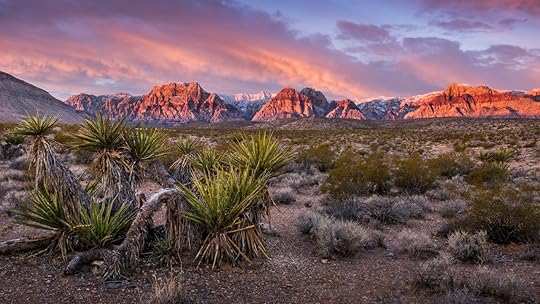
Photo: William Ducklow/Shutterstock
Red Rock Canyon is Las Vegas’ closest and quite possibly most beautiful natural playground. This 13-mile scenic drive 30 minutes from central Las Vegas is popular for multiple outdoor activities, including its 26 hiking trails, campgrounds, horseback riding, and cultural landmarks all surrounded by the canyon’s namesake red Aztec sandstone cliffs. Hikers of all skill levels can easily spend a day winding through Red Rock’s many canyons and springs, which are home to unique desert flora and fauna, as well as 800-year old indigenous petroglyph rock art.
Rock climbers consider Red Rock Canyon among the finest climbing destinations in the country — with seemingly endless intermediate-level traditional, sport, and bouldering routes. The Red Rock Loop is often lined with cyclists on a beautiful day, and mountain bikers can venture off the main loop on designated trails like the Cottonwood Valley Trails System or the Twilight Zone Trails for a more intimate experience with the area’s plant and animal life.
Those seeking a more relaxing experience should not miss Spring Mountain Ranch State Park. This serene park was once a ranch and luxury estate owned by famed German actress Vera Krupp and later by infamous Las Vegas magnate Howard Hughes. You can tour the historic building, enjoy a picnic, or hike through the picture-perfect grounds. Every summer, the park hosts its Super Summer Theatre program, where Las Vegas’s finest professional and amateur actors and actresses perform everything from Shakespeare to musicals. Bring a picnic basket and watch the mountains change to every shade of purple with the sunset before the show begins. Few Vegas attractions can compare to it.
Mt. Charleston

Photo: Eric M. Williams/Shutterstock
A short, 45-minute drive from Las Vegas lies every local’s favorite summer and winter escape: Mt. Charleston. The 11,916-foot peak, the tallest in the area, is part of the Spring Mountains National Recreation Area and is reliably 20 to 30 degrees cooler than Las Vegas — a blessing when summer temperatures reach 110 degrees and beyond. In the winter, Mt. Charleston is one of the most accessible areas in Southern Nevada with significant snowfall, drawing families with sleds as well as skiers and snowboarders ready to tear up the slopes at Lee Canyon Ski Resort.
Hiking trails at Mt. Charleston are plentiful and often under-utilized. The Mary Jane Falls Trail is a popular choice, at 3.2 miles round-trip with nine switchbacks culminating in a gorgeous natural waterfall. Another highlight is the Cathedral Rock Trail, a slightly more difficult path that slowly rises through lush ponderosa, white fir, and aspen trees, past yet another waterfall to a splendid view of the surrounding Kyle Canyon area.
For those seeking to conquer the summit of Charleston Peak, you have two options: the South Loop Trail and North Loop Trail, both well-maintained and well-traveled. Veterans of this strenuous adventure can spend an entire day on this 16-mile journey. The climb takes you up 4,000 feet, so make sure you are well prepared and adjusted to the altitude before attempting. The reward for all this hard work? A breathtaking panoramic view that stretches from Las Vegas to Death Valley to the Sierra Nevada on a clear day. Celebrate your achievement with a bowl of chili and a tall glass of your preferred libation at the Mt. Charleston Lodge. You’ve earned it.
Valley of Fire State Park

Photo: Benny Marty/Shutterstock
An hour north-east of Las Vegas lies an alien landscape known to us Earthlings as Valley of Fire State Park. This 40,000-acre area of vivid red sandstone looks like it came straight out of the Star Wars universe, an appearance enhanced by the way wind and water erosion shaped the rock face into smooth and twisted natural monuments over thousands of years. This area truly has an ancient feel — scattered around the park grounds are remnants of petrified trees that date back 150 million years. In more recent history, many trails in the park wind past 2,000-year old petroglyphs that allude to the intelligent and complex peoples that called this place home.
Hiking and camping are the primary attractions at Valley of Fire, making this location perfect for a quick day trip or a place to spend a few quiet desert nights. There are 72 first-come, first-served camping spaces across two campgrounds equipped with tables, grills, water, restrooms, and RV hookups. The natural wonders of the park are easily enjoyed by hiking trails like the splendidly Instagramable Beehives, a sandstone rock formation that is among the most iconic photo spots in the area. Similar in appearance to the kind of beehive you’d see stuck on Winnie the Pooh’s head (if he was 50 feet tall), these formations are the result of a geologic process called cross-bedding, during which minerals are deposited in angled levels by wind or water over time. There may not be honey in these beehives, but they remain a sweet visual experience.
Due to the nature of the sandstone in the area, rock climbing is not widely practiced here. Light scrambles across the terrain are more common, like the sort found at the park’s famed Elephant Rock Loop. The light 1.2-mile loop off the main road takes one up the rock face to a tremendous formation eroded into the shape of an elephant with discernable trunk, mouth, and legs. Much like an elephant, this sight is surely one you’ll never forget.
And that’s just the beginning
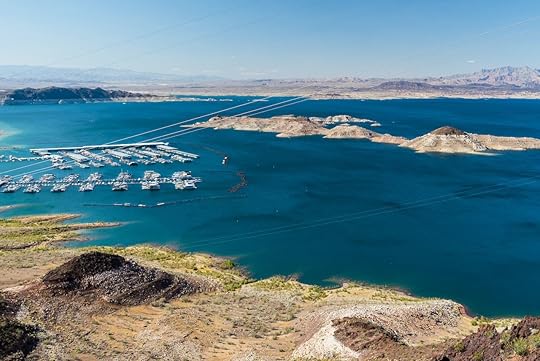
Photo: blazg/Shutterstock
Sixty-three percent of the land in Nevada is public land controlled by the Bureau of Land Management. As such, the possibilities for exploration and discovery are practically endless for those seeking their own private corner of underappreciated desert beauty.
The Lake Mead National Recreation Area, including the area around the Hoover Dam, offers an array of outdoor activities including kayaking, boating, and fishing. A favorite hike near the Hoover Dam is the Goldstrike Hot Springs scramble. Hot springs can be found in many parts of Southern Nevada and are a great (clothing-optional) way to relax your muscles at the end of rewarding trails like this one.
For a more cultured desert experience, the ghost town of Rhyolite near Death Valley contains both the ruins of a 100-year-old gold mining town as well as the contemporary Goldwell Open Air Museum. This museum is home to brightly colored abstract sculptures — including a ghostly “Last Supper” by Albert Szukalski and the nude “Lady Desert: The Venus of Nevada” by Hugo Heyrman, constructed out of pink and yellow cinder blocks — that are so out of place in their sparse surroundings that they somehow seem as if they’ve always been there.
Similarly, the Seven Magic Mountains along Interstate 15 entering Las Vegas from California are not to be missed. These 30-foot-tall, neon-tinted rock towers attract a multitude of visitors (Beyonce and Jay-Z were recently spotted taking in the sight) and are on display through 2021. The artificial, arguably ugly tones of Ugo Rondinone’s installation can be interpreted in any which way you desire, though the way the piece reflects the foreign and tenacious quality of Las Vegas — a bright spot of neon in a sea of desert reds, grays, and browns — will hopefully jog your imagination. With a head full of culture, head to the Pioneer Saloon in nearby Goodsprings, a former mining town better known today for having one of the best burgers in the state. You’ll need the fuel for the many adventures that lie ahead. 
More like this Museums 7 wacky museums in Las Vegas you need to check out
The post Skip the Strip to enjoy all the nature Las Vegas has to offer appeared first on Matador Network.

Pollution from face masks and gloves

Now that people are on board with wearing masks in public, a new issue has reared its ugly head: disposing of those masks safely and properly. With more and more local governments mandating mask-wearing, there are more face masks littering our communities than ever.
Single-use masks and latex gloves are being discarded haphazardly, and finding their way to beaches, oceans, and public parks. Since masks are made using plastics like polypropylene, they aren’t biodegradable and can pose a severe threat to our ecosystems.
In February, ocean conservation organization OceansAsia posted a photo of dozens of surgical masks littering Hong Kong beaches, and the problem has only gotten worse.
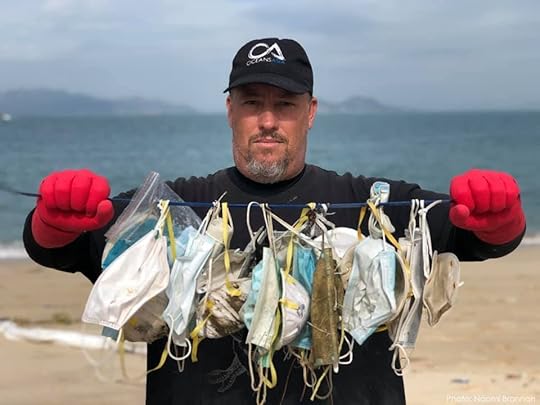
Photo: OceansAsia/Facebook

Photo: OceansAsia/Facebook
Gary Stokes, co-founder of OceansAsia, told The Independent, “The way I see these masks in the environment is just another addition to the ever-growing marine debris crisis our oceans are facing. No better, no worse, just shouldn’t be there in the first place. I’m waiting to hear of the first necropsy that finds masks inside a dead marine animal. It’s not a question of if, but when.”
And it’s not just Hong Kong plagued by discarded PPE. In the United States, Maria Algarra, founder of conservation organization Clean This Beach Up in Miami has noticed the growing number of plastic gloves littered and floating in the bay. To bring awareness of this disheartening trend, she started the #theglovechallenge on Instagram, asking people who come across improperly discarded gloves to snap a picture and use the hashtag.
View this post on InstagramA post shared by CLEAN THIS BEACH UP (@cleanthisbeachup) on Apr 27, 2020 at 1:08pm PDT
The bright colors of latex gloves are often mistaken for food by seabirds, turtles, and other marine animals, posing serious risks to their health. In December 2019, a dead sperm whale was found on a beach in Scotland; it had 220 lbs of debris in its stomach, including plastic gloves, bags, and cups. 
More like this Sustainability 10 places that are tackling pollution in creative ways
The post Discarded face masks and gloves are posing a serious risk to marine life appeared first on Matador Network.

Yankee Stadium drive-in festival

With live sporting events still on hold, Yankee Stadium, in New York City, is going to be put to different use this summer. Starting in July, the stadium’s parking lot will be transformed into a drive-in festival venue featuring concerts by local artists and movie screenings with a side-car dining service. The initiative, called Uptown Drive-In, is a new creative project by the MASC Hospitality Group — the organizer of the Bronx Night Market and the Bronx Beer Festival.
Scheduled to take place each weekend, Uptown Drive-In will feature interactive activities, raffles, games, and food stalls from local city vendors. The Friday event is being billed as a date-night experience, while events on Saturday and Sunday will celebrate family-friendly brunch.
“Since we were planning on having the Bronx Night Market, the Bronx Beer Festival and Uptown Epicure Festival running this summer, which was supposed to start in May, we already had a lot of great options available. Everyone is so excited about the possibility of connecting sooner [at this new experience] than initially planned,” MASK Hospitality Group’s Marco Shalma told Time Out.
Sharma stressed that tickets for the event will be affordable in order to be as accessible as possible to all. A portion of tickets will also be given away through online raffles. While the official dates have not been announced yet, you can register here for the waitlist. 
More like this News Vilnius airport sets up a drive-in movie theater on empty tarmac
The post Yankee Stadium parking lot to be transformed into a drive-in festival venue appeared first on Matador Network.

NZ could implement shorter work week

New Zealand has earned praise for its swift handling of the coronavirus, effectively eliminating the virus domestically. In addition to a shift toward working from home as a consequence of the health crisis, New Zealand workers might also be able to look forward to a four-day workweek. Jacinda Ardern, the country’s prime minister, floated the four-day workweek idea as a way to stimulate domestic tourism while borders remain closed to foreigners.
In a Facebook video, Ardern said, “I hear lots of people suggesting we should have a four-day workweek. Ultimately, that really sits between employers and employees. But, as I’ve said, there’s just so much we’ve learnt about COVID and that flexibility of people working from home, the productivity that can be driven out of that. I’d really encourage people to think about that if you’re an employer and in a position to do so — to think about if that’s something that would work for your workplace because it certainly would help tourism all around the country.”
The suggestion assumes that if given an extra day off, New Zealanders would be encouraged to use their long weekends to travel domestically. This would hopefully offset the loss of revenue resulting from border closures.
And the idea isn’t falling on deaf ears. Andrew Barnes, the founder of New Zealand company Perpetual Guardian, which employs over 200 people, is ahead of the curve. His company transitioned to a four-day workweek in 2018.
“New Zealand could definitely go to a four-day week in the aftermath of Covid,” he told The Guardian, “and in fact it would be a strategy to rebuild the economy and particularly the hard-hit tourism market as it pivots to a domestic focus.” 
More like this Lifestyle Pro tips for working from home, from the Matador staff who do it year-round
The post New Zealand prime minister suggests four-day workweek to boost tourism appeared first on Matador Network.

May 19, 2020
St. Lucia to open to tourists
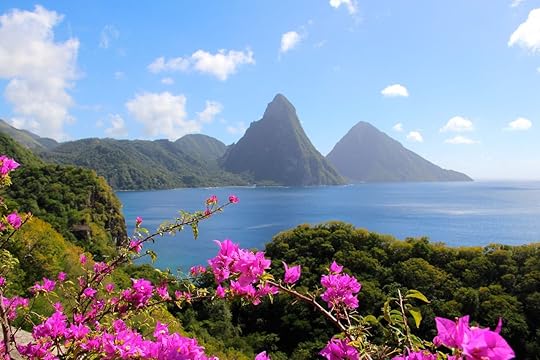
Caribbean vacations have been indefinitely on hold for the past few months, but now there may be a light at the end of the tunnel. St. Lucia is the first Caribbean island to announce a definite date to begin reopening to tourists. On June 4, the island will begin a multi-phased approach that requires visitors and hotels to adopt new sanitation measures.
Phase one of the reopening starts on June 4 and will require visitors to prove that they tested negative for the coronavirus within 48 hours of boarding their flight. Health authorities will be present at ports to conduct random screenings and temperature checks for new arrivals, and before opening, hotels must apply for COVID-19 certificates from the government proving that they’ve met sanitation criteria.
Dominic Fedee, the island’s Minister of Tourism, said in a statement, “Our new protocols have been carefully crafted and will build confidence among travelers and our citizens. The Government of Saint Lucia remains resolved to protect both lives and livelihoods as it jumpstarts its economy.”
Much like hotels, businesses will only be allowed to operate after implementing certain protocols, including disinfecting surfaces and enforcing social distancing.
Phase two will begin August 1 though specific details won’t be released for another few weeks.
Other islands, like Aruba and the Bahamas, have announced plans to begin phased reopenings over the next few months, but no specific dates or protocols for tourists have been put in place. 
More like this Beaches + Islands The coolest Airbnb experiences in the Caribbean
The post St. Lucia will become the first Caribbean island to reopen to tourists appeared first on Matador Network.

Matador Network's Blog
- Matador Network's profile
- 6 followers



